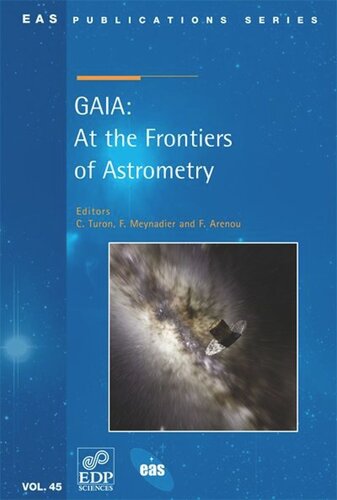

Most ebook files are in PDF format, so you can easily read them using various software such as Foxit Reader or directly on the Google Chrome browser.
Some ebook files are released by publishers in other formats such as .awz, .mobi, .epub, .fb2, etc. You may need to install specific software to read these formats on mobile/PC, such as Calibre.
Please read the tutorial at this link: https://ebookbell.com/faq
We offer FREE conversion to the popular formats you request; however, this may take some time. Therefore, right after payment, please email us, and we will try to provide the service as quickly as possible.
For some exceptional file formats or broken links (if any), please refrain from opening any disputes. Instead, email us first, and we will try to assist within a maximum of 6 hours.
EbookBell Team

5.0
38 reviewsThe Symposium "Gaia : at the frontiers of astrometry", held in Sèvres (Hauts de Seine, France) from 7 to 11 June 2010, was the closing conference of the European Marie Curie ELSA network (European Leadership in Space Astrometry). Gaia, selected as one of the cornerstones of the European Space Agency (ESA) Science Program in October 2000 and planned for launch in 2012, has been conceived in the wake of the success of the Hipparcos satellite, the first space astrometry mission, launched by ESA in 1989. Combining the power of discovery of a systematic and repeated survey of the sky with three complementary instruments (astrometric, photometric and spectroscopic) and extreme accuracy astrometry, Gaia will provide an unprecedented stereoscopic map of our Galaxy and the nearby universe. The objectives of the Symposium were to present the results obtained in the framework of the ELSA network on the various aspects of the preparation of the data analysis and scientific exploitation of the Gaia mission. The science expected from Gaia has been put in the 2015 context, and progresses on parallel or connected topics have been presented : progress on other astrometric satellites, performance of light detectors in astronomy, processing of massive data sets, especially in astronomy, real-time classification of transients, access to massive data sets, and propects for ground-based observations in complement to astrometry.